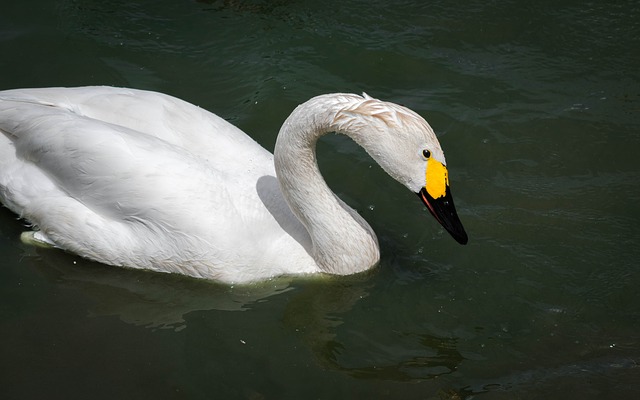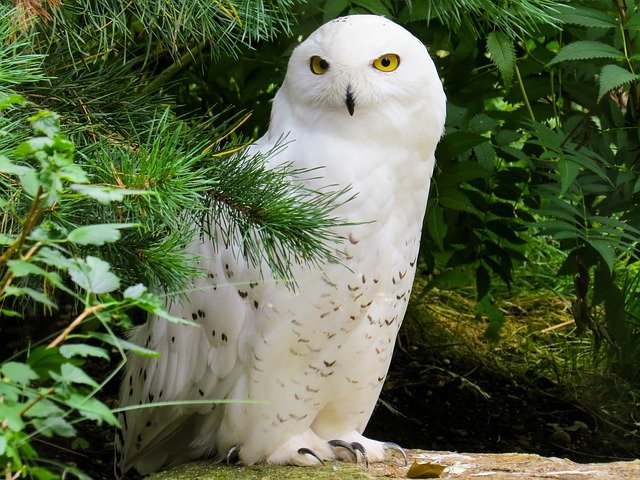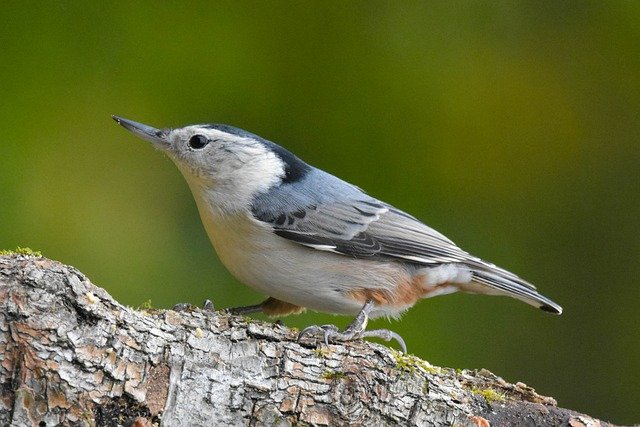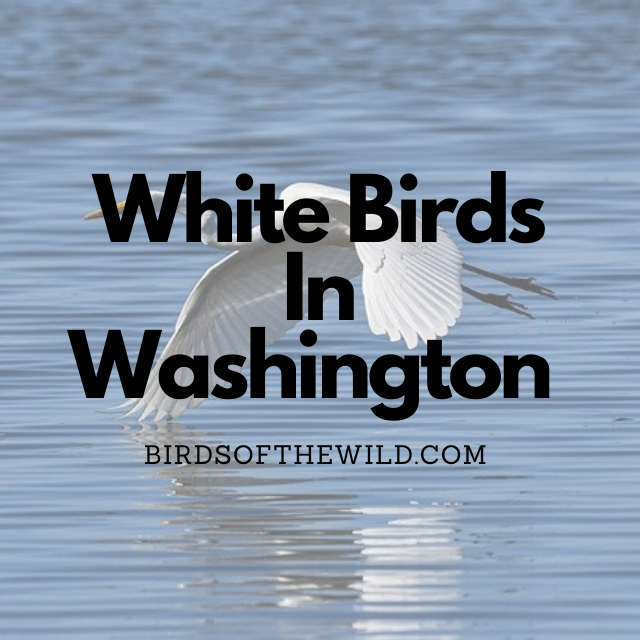White birds can be found all throughout Washington if you know where to look so. In this article I’ll be going over 5 unique white birds that can be found throughout Washington so, if you want to learn a bit more about them continue reading.
- Tundra Swan
- Snowy Egret
- Great Egret
- Snowy Owl
- White Breasted Nuthatch
5 White Birds In Washington
1. Tundra Swan (Cygnus Columbianus)

- Size: 120 – 147cm
- Weight: 3.8 – 10.5kg
- Wingspan: 160 – 175cm
Tundra swans can be found in the western region of Washington in their non-breeding season whilst they’ll typically be migrating through the remainder of the state.
These swans are recognised by their entirely white plumage, with black and yellow beaks. Male and female tundras look the same but, the bills of males will swell up in breeding season unlike the females.
You’ll often find these swans around near the coast. During migration and through the winter, they inhabit shallow lakes, slow-moving rivers, flooded fields, and coastal estuaries.
As tundra swans are herbivores, they will primarily eat roots, stems and leaves of aquatic vegetation, such as mannagrass, pondweeds, and even algae.
The average lifespan for these birds is around 10 years although this lower number is due to the various diseases these swans to suffer from. If a tundra swan is in good health throughout their lives, staying alive for 20 – 24 years isn’t too far off from what’s possible.
2. Snowy Egret (Egretta Thula)

- Size: 56 – 66cm
- Weight: 350 – 390 grams
- Wingspan: 95 – 105cm
You can spot vagrant snowy egrets around the Eastern part of Washington.
Snowy egrets as their name would suggest are snow white birds with a long neck, black beak, black legs whilst also having a relatively large frame. Besides their sexual organs the only differentiating factors between males and females are that the males are slightly larger.
You’ll find these egrets by mudflats, beaches, and wetlands, but you can also see them forage in wet agricultural fields and along the edges of rivers and lakes.
Snowy egrets eat a variety of foods from fish, insects, crustaceans which includes crabs, crayfish, frogs, snakes, snails, worms, lizards, rodents and more.
These egrets are known to live for around 5 – 6 years in the wild and upwards of 16 years in captivity.
3. Great Egret (Ardea Alba)

- Size: 80 – 100cm
- Weight: 0.7 – 1.5kg
- Wingspan: 130 – 170cm
You’ll find great egrets within the south-eastern part of the state when they happen to be making their migratory passage through the state.
Great egrets are recognised by their extremely long necks, yellow bill, long black legs and mostly white plumage. Both males and females look very similar with the males being generally larger than the females.
Great egrets spend the majority of their time within marshes, ponds, shores and mud flats.
As for what they eat, it includes primarily consume fish along with crustaceans, amphibians, and small mammals. They will also forage around open areas.
Great egret tend to live for around 15 years in the wild and around 22 years in captivity.
4. Snowy Owl (Bubo Scandiacus)

- Size: 52 – 71cm
- Weight: 1.1 – 2kg
- Wingspan: 125 – 164cm
Snowy owls are residents within Washington when they aren’t breeding. This would typically be around the fall and winter periods.
These owls are recognised by their mostly white plumage with brown dots throughout the body. Females on the other hand are generally less white than the males as the brown spots encompass more of their body.
Snowy owls tend to spend their time within arctic tundra or open grasslands and fields, whilst avoiding forested areas.
As for what they eat, it includes lemmings and a variety of small mammals. Nevertheless, they will still occasionally eat larger mammals like like hares, rats, rabbits, etc.
Snowy owls have been observed to live for around 28 years in captivity and between 10+ years in the wild.
5. White Breasted Nuthatch (Sitta Carolinensis)

- Size: 13 – 14cm
- Weight: 18 – 30 grams
- Wingspan: 20 – 27cm
These white breasted nuthatches are year round residents within the state of Washington, so you should be able to spot them in the state year round.
White breasted nuthatches are recognised by their gray back, wings and the upper head with white breast feathers. Females look the same as the males.
As for where you would find these white breasted nuthatches, it would be around mature woods and woodland edges, where they’re most commonly located by deciduous stands that have maple, hickory, basswood, oak and are even found in some coniferous forests.
They mostly consume nuts, seeds and insects, which can include hazelnuts, sunflower seeds and suet.
As for how long white breasted nuthatches live in the wild, it tends to be around 2 years with the longest lifespan recorded around 12 years.
Amhil Khan, a dedicated nature enthusiast and the founder of BirdsOfTheWild.com, is a passionate advocate for the captivating world of avian wonders. With a deep-seated curiosity about the intricate lives of birds, Amhil’s journey began as a fascination and has evolved into a mission to inspire others to appreciate and protect these magnificent creatures.
Amhil’s love for birds led to the creation of Birds of the Wild, a platform where his expertise in ornithology, coupled with his captivating storytelling, provides readers with an immersive and educational experience. Through his lens and words, he captures the essence of birds in their natural habitats, offering a glimpse into their behaviors, migrations, and the ecosystems they inhabit.

